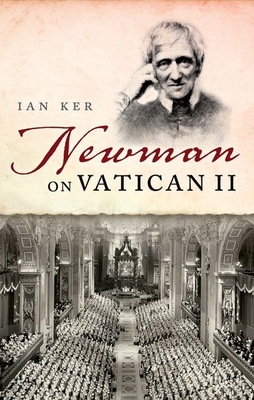
My review:
I read this book just coming off reading Newman’s Apologia Pro Vita Sua. And I’m glad I did this because otherwise I would not have been able to appreciate enough what Ian Ker is trying to convey through his work: that Newman’s theology was very influential at Vatican II and how it should still be in the post-Vatican II era of our time.
I really had no idea how much we are in debt to this man. But also how much we have neglected his thought. Even 150 years ago he saw that we were facing a unique time in the relationship between the Church and the world:
The Church had had plenty of experience of dealing with pagans, but not of a world where the supernatural seemed to have disappeared from human consciousness, a world where… Catholics were likely to be ‘regarded as… the enemies… of civil liberty and of national progress’.
Indeed, we truly are living in a different time in history. The world is not pagan as it once was, but is entirely secular or post-Christian at best. We, therefore, need to evangelise it differently. We can’t lean on arguments that presuppose knowledge or belief in the supernatural or immaterial. Nor even on arguments that presuppose any form of objectivity, especially in the realm of morality. Newman reflected on this profoundly. He wrote about this profusely. But why had I not been aware of this? Here was a man of great intellectual power who left us incredible insights into what we now term “The New Evangelisation”. I can’t believe that we don’t turn to him more often because his suggestions are brilliant. Ian Ker shows this really well.
Ker also shows us how Newman’s thought can be used to defend Vatican II and also how to interpret it correctly in line with a “hermeneutic of continuity”. Newman was a “radical conservatist” and would undoubtedly have been all aboard the changes proposed by Vatican II (including those in “Dignitatis Humanae”). But he definitely would have been appalled at the liberalism that ensued after the council. Change is good. Rupture from tradition can be good. But rupture from Tradition (with a capital ‘T’) never is and will always lead to disaster and a Church that will appear rudderless.
(Of course, discerning sometimes between the two traditions is hard and no clear guidelines have been laid down yet by the Church. So, when dealing with events like Vatican II, all we have left sometimes in the end is to trust that the Church is being led by the Holy Spirit and not attempt to form breakaway churches like the SSPX. A great series of articles about this topic can be found on Larry Chapp’s blog here.)
Anyway, if only Newman were alive now to assist us in these times. However, he did leave us a work of fiction entitled “Callista” that I had never heard of prior to reading this book. “Callista” is a novel whose story centres around the evangelising of a secular, atheistic society. I look forward to reading it.
The one criticism I would have of “Newman on Vatican II” is Ian Ker’s writing style which can be a bit dry and perhaps academic at times. He is a brilliant scholar and thinker (and admirer of Newman) but he is no Benedict XVI when it comes to the conveying of ideas in a lucid way. Nonetheless, if Vatican II and The New Evangelisation is a topic that is of interest to you, then this book is a must-read.
RIP Ian Ker (deceased November 2022).
To be informed when new content like this is posted, subscribe to the mailing list: